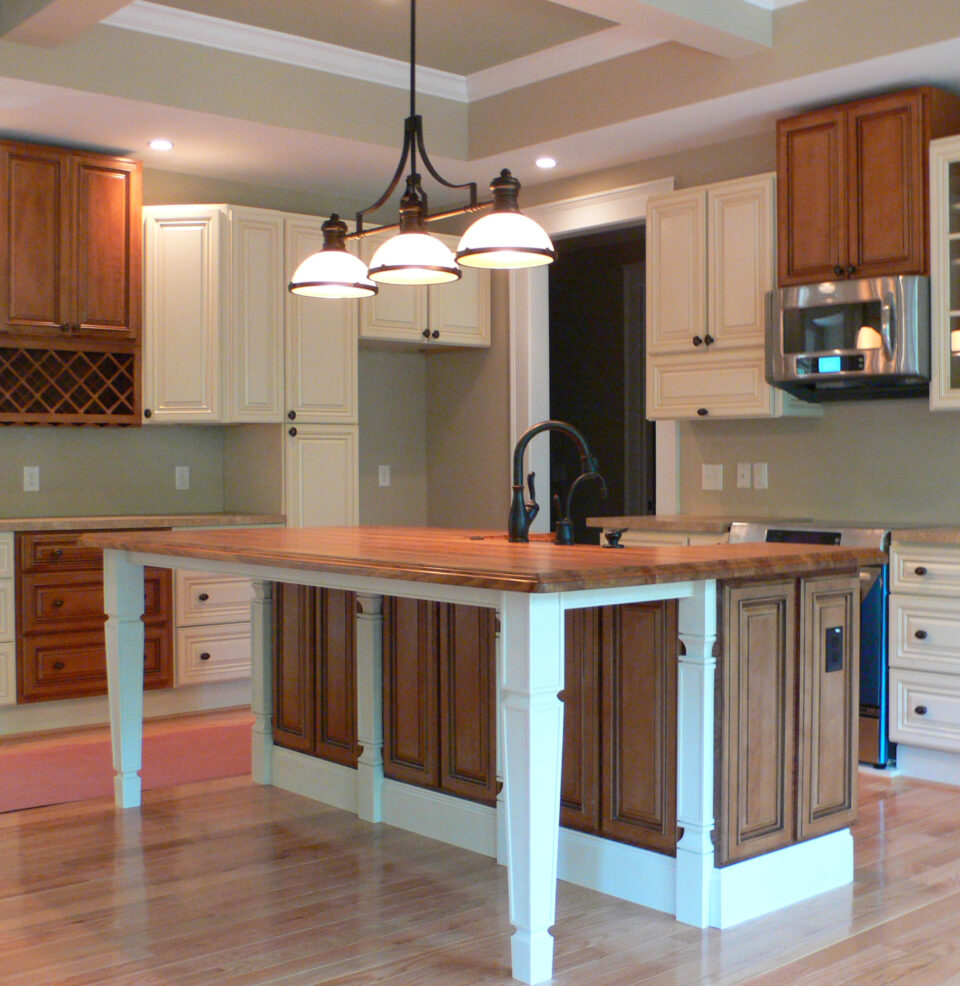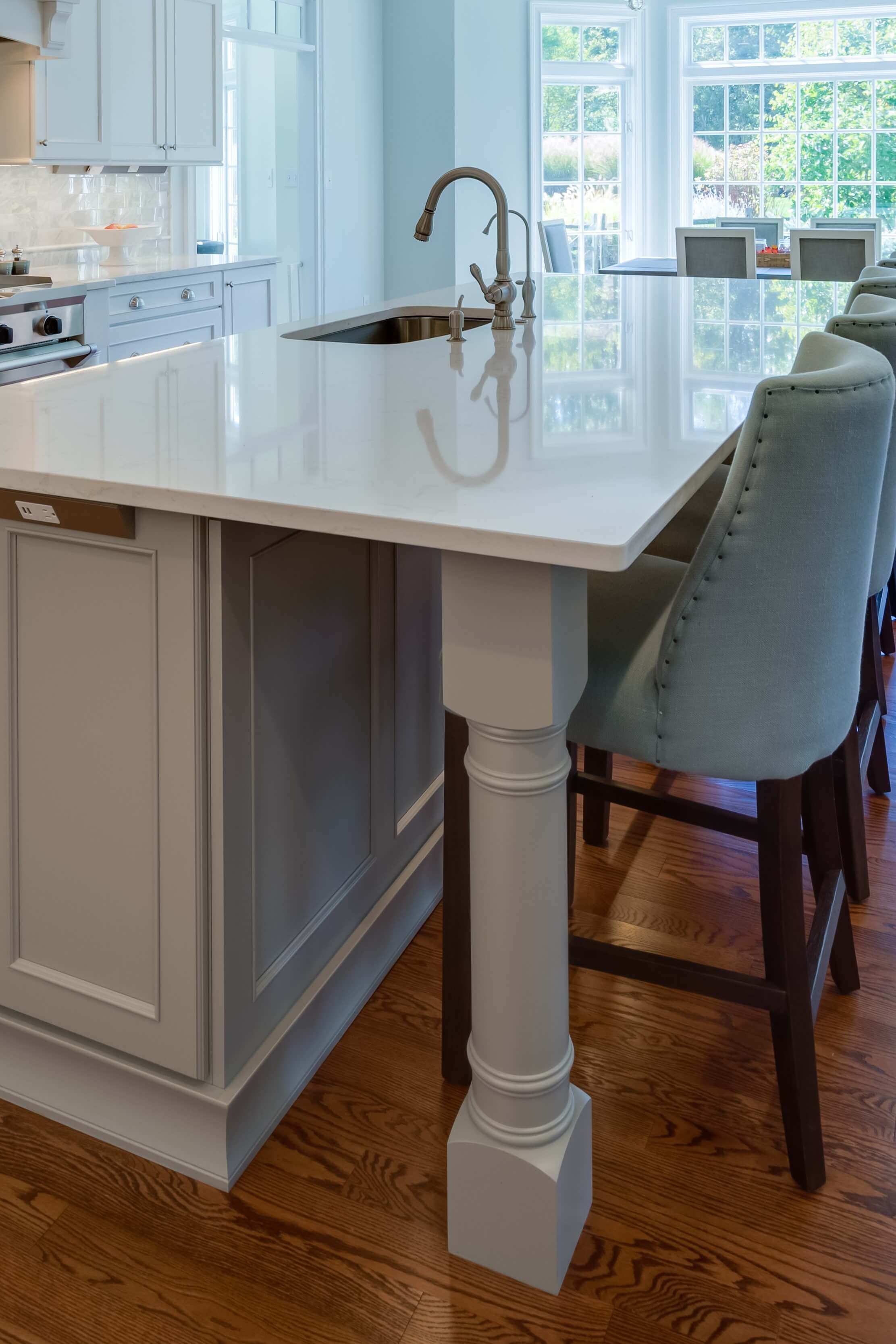Stylish Kitchen Island Legs: Boost Your Kitchen Layout
Stylish Kitchen Island Legs: Boost Your Kitchen Layout
Blog Article
Vital Tips for Choosing the Perfect Table for Your Kitchen Area
Selecting the perfect eating table for your cooking area is even more than simply an issue of taste; it necessitates a detailed understanding of your room and requirements. Begin by measuring your offered room to guarantee ample clearance for motion. The form of the table plays a critical role; while rectangle-shaped tables match larger locations, round ones foster affection, and extendable choices use versatility. Material option is similarly critical, with woods offering resilience and glass loaning a modern touch. Lastly, the table needs to balance with your kitchen area's looks and fit your household comfortably. What other variables might influence this crucial choice?
Step Your Area
Selecting the perfect table starts with a precise analysis of your readily available room. This fundamental step makes sure that the table not just fits pleasantly within the space yet likewise complements the total design and capability of your eating location. Begin by gauging the dimensions of the room, taking into consideration entrances, windows, and any existing furniture. This will assist you establish the maximum allowable dimension for your eating table.
It is crucial to leave adequate space for chairs to be drawn out and for people to move around the table without blockage. A general regulation of thumb is to allow at the very least 36 inches of clearance from the edge of the table to the closest wall surface or piece of furnishings.
In addition, think about the number of individuals you generally entertain and whether you require extra space for visitors. Going with an extendable table can provide adaptability, enabling you to suit varying numbers of restaurants. By accurately determining your space, you lay the foundation for picking a table that enhances both the aesthetic appeals and functionality of your eating location.
Select the Right Shape

On the other hand, round tables are excellent for smaller sized kitchen areas or intimate celebrations, as they advertise discussion by allowing everyone to deal with each various other. They likewise supply a sense of coziness and can fit well in tighter spaces because of their lack of sharp corners. Oblong tables use the most effective of both globes, combining the size of rectangular tables with the intimacy of round ones, making them functional for various setups.
Square tables are another option, particularly fit for square-shaped spaces. They produce a in proportion and modern appearance, promoting an equal dining experience for all seated. However, they might be less functional for bigger events unless they come with extensions. Inevitably, the form you pick should straighten with your room measurements and way of living to ensure both type and feature.
Material Considerations
When choosing a dining table, product considerations are paramount in figuring out the table's durability, maintenance demands, and total aesthetic. Wood is a traditional selection, providing timeless appeal and effectiveness. Hardwoods like oak, walnut, and mahogany are specifically long look here lasting, though they can be expensive. kitchen island legs. Softwoods, such as ache, are much more budget friendly however might be prone to scrapes and dents.
Glass-topped tables supply a contemporary, sleek appearance and can make a room show up bigger due to their openness. They require constant cleansing to avoid spots and finger prints. Furthermore, tempered glass is advised for its extra strength and safety and security.

Last but not least, composite products like MDF (Medium-Density Fiberboard) or plywood are economical options. These products can resemble the appearance of solid timber but might not provide the very same durability. They are usually much easier to clean yet can be prone to water damage otherwise effectively sealed.
Inevitably, the choice of product ought to line up with your kitchen's style, your lifestyle requires, and your budget plan restrictions. (kitchen island legs)
Seating Capacity and Comfort
How do you determine the right seating capacity and convenience for your eating table? For a family members of four, a rectangular table of 48 inches long or a round table with a 48-inch diameter is typically sufficient.
The height of the table need to ideally be around 30 inches, providing a well balanced ergonomic stance for seated diners. Chairs should have a seat height of 18 to 20 inches to make sure a comfortable dining posture.
Design and Aesthetics
Selecting a table that discover here matches your style and aesthetic appeal entails balancing individual taste with the existing decoration of your eating room. The eating table is typically the centerpiece of the kitchen area, and its layout must complement the total theme of the room. Whether your kitchen area flaunts a modern, minimalist look or a rustic, farmhouse charm, the table you choose need to balance with these aspects to create a natural and inviting environment.
Take into consideration materials thoroughly; wood offers a visit this page timeless appeal and can range from rich mahogany for a standard look to lighter oak for a contemporary feeling. Steel and glass tables, on the other hand, can present a sleek, commercial side to your kitchen area. Don't neglect the table's form-- rectangular tables are traditional and flexible, while round and oblong choices can promote a much more intimate dining experience.
Furthermore, pay attention to surfaces and information. A distressed coating may include character and heat, whereas a shiny surface can contribute to a clean, modern-day aesthetic. Inevitably, your table should not just in shape effortlessly into your kitchen's layout yet additionally mirror your personal design, raising the room both functionally and visually.
Conclusion
In conclusion, selecting the suitable dining table for a kitchen necessitates careful analysis of area, form, product, seating ability, and aesthetic consistency. Eventually, a well-chosen eating table cultivates an inviting ambience and accommodates the home easily, hence improving the eating experience.

When picking an eating table, product considerations are critical in identifying the table's resilience, maintenance demands, and overall aesthetic. For a family of 4, a rectangular table of 48 inches long or a round table with a 48-inch diameter is generally sufficient.
Don't overlook the table's shape-- rectangular tables are classic and versatile, while round and oval alternatives can cultivate a much more intimate eating experience. kitchen island legs.
Report this page